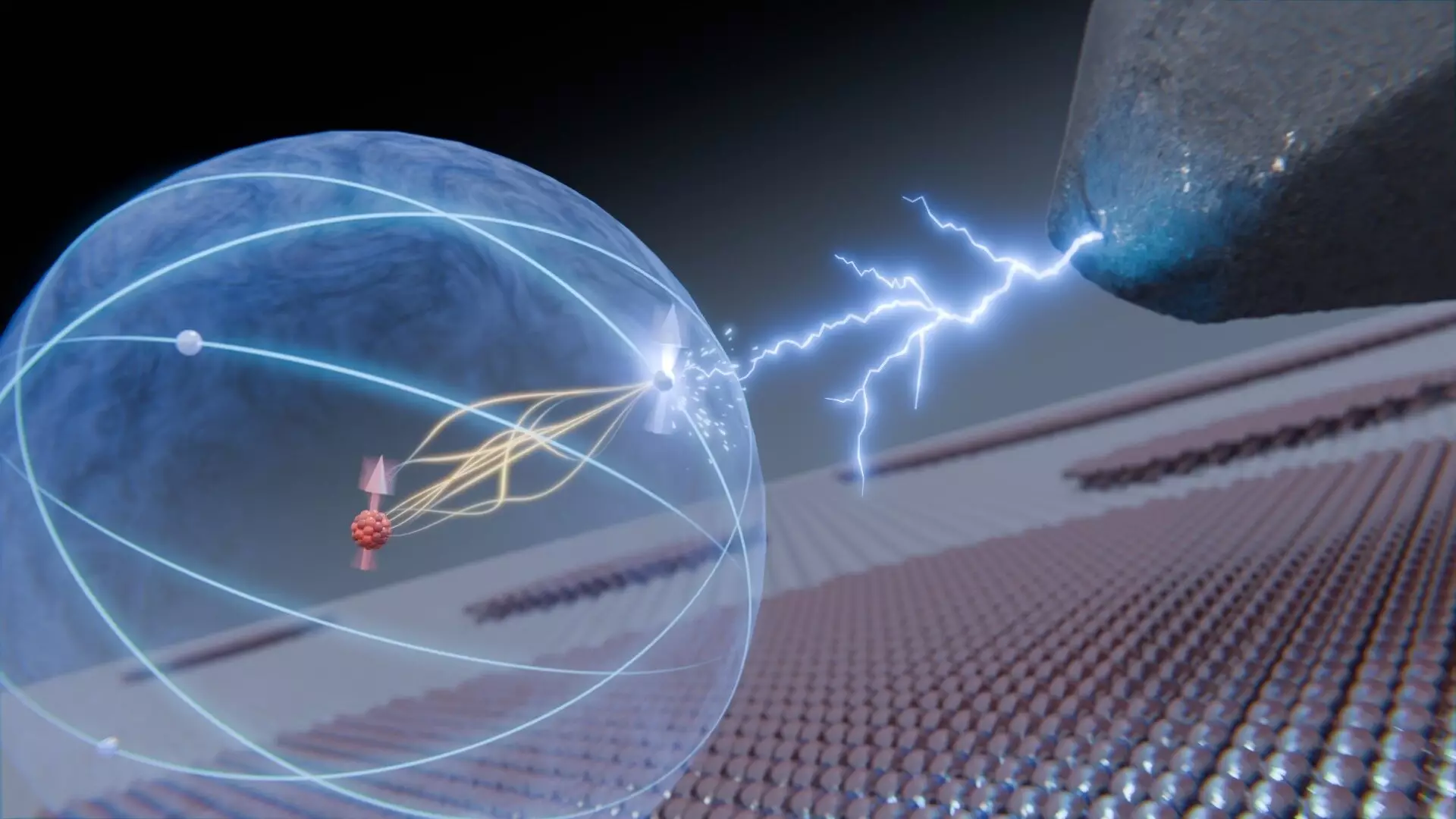Recent research conducted at Delft University of Technology has unveiled a groundbreaking method for controlling atomic movement at the nucleus level. Scientists have successfully induced an interaction between an atomic nucleus and its outer electrons, employing cutting-edge techniques that set the stage for potential advancements in quantum computing. This research, featured in the esteemed journal Nature Communications, presents exciting possibilities for the secure storage of quantum information within the nucleus, protecting it from external disturbances that can often compromise data integrity.
At the heart of this research lies the manipulation of a titanium atom, specifically Ti-47, which consists of one less neutron than its more common variant, Ti-48. This unique structure imparts a slight magnetic quality to the Ti-47 nucleus, allowing it to exhibit a form of “spin,” analogous to a compass needle that can point in different directions. The defining characteristic of this spin is its potential to represent quantum information, offering a new frontier for storing and processing data on unimaginable scales.
The nucleus of an atom resides within a vast space, separated from the electrons that orbit around it. However, it is not entirely isolated; it can be influenced by the weak “hyperfine interaction” between the nucleus and the electron spins. This interaction is so subtle that it requires precise conditions—particularly finely-tuned magnetic fields—to be effectively utilized. The research team’s ability to master these conditions demonstrates an astonishing level of control.
Using sophisticated techniques, the researchers employed a voltage pulse which disrupted the electron spin’s equilibrium, resulting in both the atomic nucleus and electron spins oscillating together for an infinitesimal duration of time—a mere fraction of a microsecond. This outcome aligns notably with predictions made by quantum physicist Erwin Schrödinger, reflecting the integrity of quantum mechanics in this newly explored context.
Lukas Veldman, a recent Ph.D. graduate and researcher in this field, noted that computational models aligned startlingly well with observed data. This correlation reinforces the notion that no quantum information was compromised during the interaction—a pivotal finding in the pursuit of creating a robust quantum information storage form.
The implications of this research extend far beyond academic curiosity. As the quest to secure quantum information storage becomes increasingly vital, the nuclear spin’s inherent shielding capability against environmental noise positions it as a promising candidate for future quantum computing applications. However, the driving force behind this research transcends practical applications; it illuminates humanity’s unprecedented ability to influence matter at an atomic scale.
Sander Otte, the leading researcher, emphasized that this experiment showcases the extent to which humans can manipulate states of matter—an undertaking that challenges our understanding of physics and the universe. With the prospect of controlling such elemental components of nature, the boundaries of technological capability are constantly being expanded, heralding a new era in quantum physics and information technology.
The study conducted by Delft University of Technology not only advances our knowledge of atomic interactions but also invites us to reconsider the potential future applications of quantum technologies that could redefine information processing.


Leave a Reply